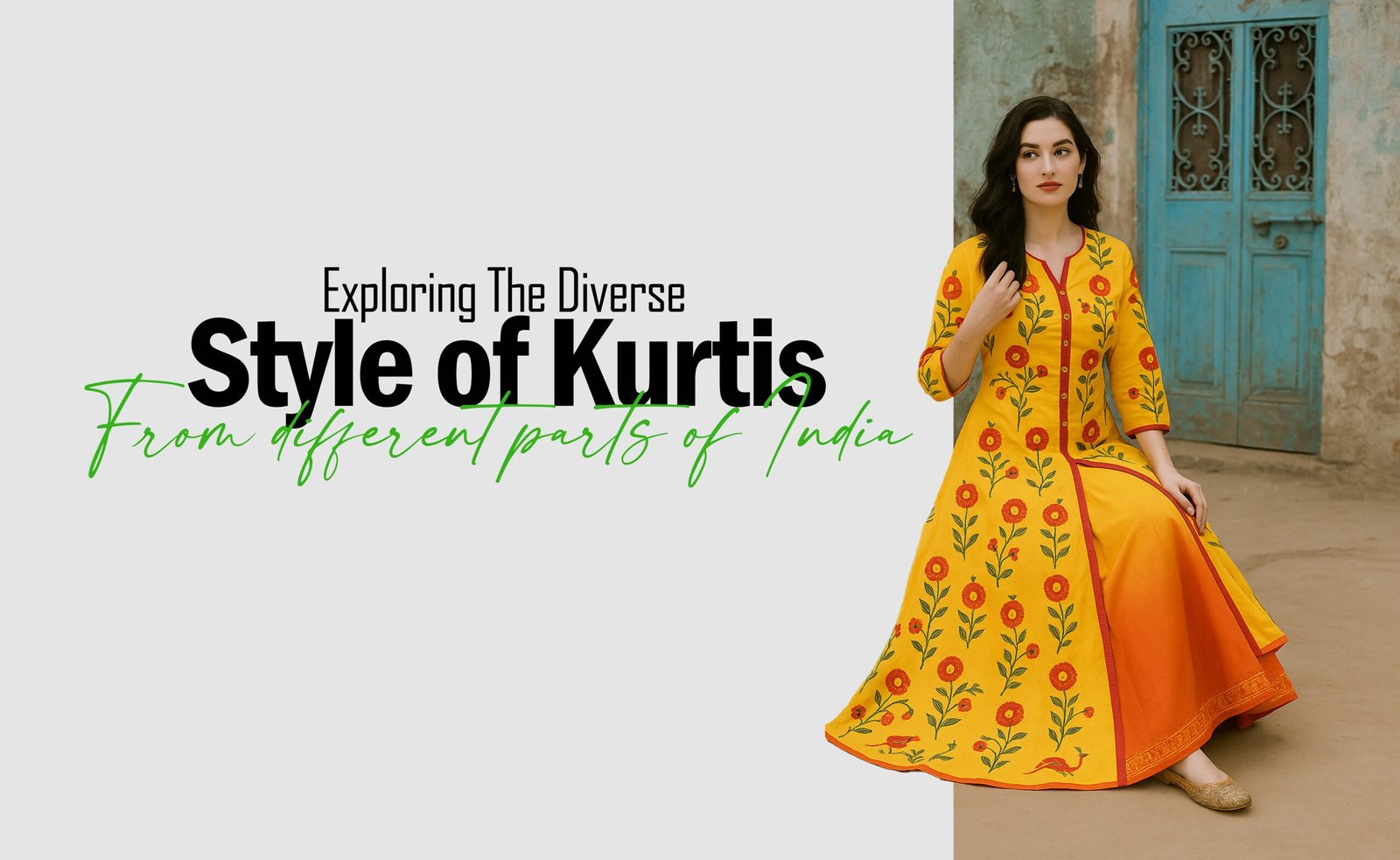Exploring the Diverse Styles of Kurtis from Different Parts of India

The Cultural Significance of Kurtis
Kurtis have long been a staple in Indian women’s fashion, serving not only as a garment but also as a symbol of cultural identity and heritage. Historians trace the origins of the kurti to the traditional garments worn in ancient India, evolving over centuries into the versatile piece we recognize today. Initially rooted in regional styles, kurtis reflect the distinct textiles, embroidery techniques, and motifs of various parts of the country, showcasing a rich tapestry of cultural influences.
The kurti has risen to prominence in contemporary fashion, bridging the gap between traditional and modern aesthetics. This garment is particularly significant during cultural celebrations, festivals, and religious events where women often don embellished and intricately designed kurtis. These occasions highlight the adaptability of kurtis, as they can be customized with fabrics ranging from silk and cotton to chiffon and georgette, catering to different climates and festivities across India.
In everyday wear, kurtis have become a symbol of comfort and practicality, effortlessly merging style with ease. The rise of casual wear has heightened the popularity of this item, allowing it to be embraced in various settings, from home to the workplace. Furthermore, the kurti serves as a medium for self-expression; women often select designs that resonate with their personalities and reflect their cultural backgrounds. This connection to one’s roots is especially significant in a society where traditional values coexist with modern influences.
As we explore the diverse styles of kurtis across India, understanding their cultural significance becomes paramount. These garments encapsulate not only the evolution of fashion but also the enduring spirit of Indian femininity and resilience, making them a vital part of the nation’s sartorial landscape.
Regional Variations of Kurtis
Kurtis, a versatile garment worn by women across India, exhibit a rich diversity influenced by regional characteristics, traditions, and craftsmanship. Each state has its distinctive style, which is reflected in the designs, fabrics, and embroidery techniques used in creating kurtis. This section aims to explore the various regional variations of kurtis that offer a glimpse into the cultural heritage of India.
In Punjab, for instance, kurtis are typically characterized by their vibrant colors and lively motifs. The use of fabrics such as cotton and silk, accentuated with intricate phulkari embroidery, enhances their appeal. The traditional Punjabi kurti is often paired with a salwar, highlighting the elegance and comfort that this attire offers. Similarly, in Gujarat, kurtis are often adorned with mirror work and bandhani prints, showcasing the state’s rich textile heritage.
Moving towards Rajasthan, the kurtis display a fusion of vibrant hues and traditional Rajasthani art. These kurtis often feature block printing and mirror embellishments, making them not just garments but statements of art. The artistic patterns reflect the rich cultural history of the region, while the lightweight fabrics make them suitable for the hot climate.
In contrast, Bengali kurtis are primarily recognized for their unique emphasis on simplicity and elegance. They often feature soft colors and fine, light fabrics such as muslin, embroidered with delicate motifs inspired by nature. The understated sophistication of Bengali kurtis strikes a perfect balance between tradition and modernity, making them a preferred choice for many.
Moreover, the diversity of styles continues in the southern states, where kurtis incorporate local textiles such as ikat and khadi, each with its own regional touch. The diverse regional styles of kurtis in India not only highlight local craftsmanship but also showcase the rich cultural tapestry of the nation.
Popular Fabrics and Embellishments Used in Kurtis
Kurtis are versatile garments that come in various styles and designs, influenced significantly by the fabrics used in their creation. One of the most popular materials for kurtis is cotton, valued for its breathability and comfort, particularly in warm climates. Cotton kurtis are often chosen for casual wear due to their softness and ability to absorb moisture, making them perfect for daily use and informal gatherings. In contrast, silk kurtis are commonly selected for festive occasions and formal events; the luxurious feel and sheen of silk provide an elegant look that elevates any outfit.
Another noteworthy fabric is linen, which offers a lightweight and textured appearance that is ideal for both casual and chic styles. Linen kurtis are especially appreciated for their drape and ability to keep the wearer cool in hot weather. Additionally, georgette has gained popularity for its fluidity and lightness, making it suitable for more sophisticated and flowing designs, often adorned with embellished details that enhance their aesthetics.
When it comes to embellishments, the choices are as rich as the fabrics. Techniques such as block printing, which involves hand-carved wooden blocks dipped in dye, create stunning patterns on the fabric, establishing a unique identity for each kurti. Besides block printing, mirror work is another popular embellishment that adds a reflective quality to kurtis, catching light beautifully and enhancing the garment’s overall appeal. Hand embroidery is yet another exquisite technique, showcasing intricate patterns and designs that require great skill and artistry, making each piece unique.
The combination of fabric choice and embellishments allows for the versatility of kurtis, making them suitable for various occasions, be it casual outings or festive celebrations. The careful selection of fabric and decorative elements not only enriches the kurti’s style but also reflects the cultural heritage of different regions in India.
Styling Tips for Wearing Kurtis
Kurtis are versatile garments that can be styled in numerous ways, making them suitable for various occasions, from casual outings to formal events. One of the most popular pairings is with leggings. This combination is ideal for a chic, everyday look. Opt for fitted leggings in neutral tones or contrasting colors to draw attention to the kurti. For a more relaxed style, consider teaming your kurti with palazzos. This pairing works well for both daytime outings and evening gatherings, allowing for airflow and comfort, especially in warmer weather.
Skirts present another stylish option when paired with kurtis. Long, flared skirts can elevate the overall look, providing a graceful silhouette. Choose skirts patterned with complementary colors or solid hues to keep the focus on the intricacies of your kurti. Additionally, layering is an effective method to enhance your outfit; a light jacket or a dupatta can add texture and sophistication. When selecting accessories, consider the kurti’s design—opt for statement necklaces to complement simple kurtis or delicate earrings to match intricately designed pieces.
Footwear also significantly impacts the overall appearance. For a casual outing, chic flats or juttis work well, while block heels add elegance for formal occasions. Remember, choosing the right footwear can take your kurtis from simple to stylish effortlessly. Adapting your kurti styles based on the occasion is crucial. For traditional events, opt for kurtis with embroidery or embellishments. Alternatively, for a modern twist, select kurtis with contemporary cuts or asymmetrical designs. Integrating these tips into your wardrobe will not only enhance your style but also underline the kurti’s versatility in contemporary fashion.


